Resources & Insights

Blog
▪
Critical Infrastructure
CBRS vs. Private LTE Networks in Data Centers
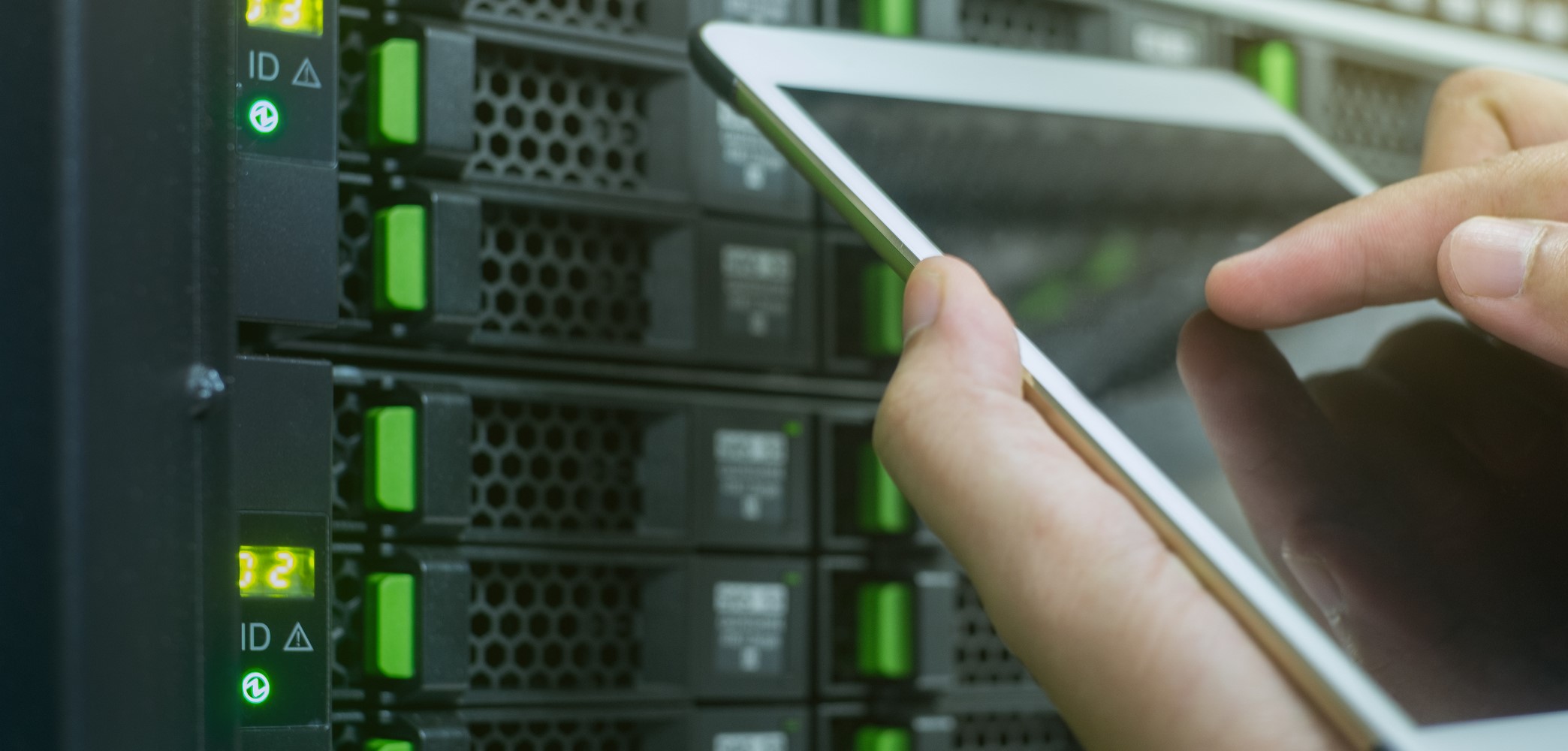
Blog
▪
Commercial
How a Network Management System (NMS) Transforms Your IT Story

Filter By

Blog
Commercial
Power over Ethernet (PoE) in Smart Building Design: A Conversation with HITT & Vision Technologies
HITT Contracting Co-President Drew Mucci recently sat down with Vision Technologies’ Vice President of Solution Architecture Jon Fine for a deep dive into Power over Ethernet (PoE) and how HITT is implementing this game-changing technology at one of the largest scales in the country at their new headquarters in Northern Virginia. PoE is transforming how […]…
Nov 4, 2025

Data Sheet
Commercial
In-Building Wireless Solutions
Vision Technologies provides complete neutral-host, in-building wireless coverage by enabling seamless access to all wireless data and voice services within corporate offices, universities, hospitals, airports, manufacturing, and government facilities. Our solutions feature the industry’s leading converged wireless enterprise networks, providing high-quality and reliable coverage for wireless data (Wireless LAN), voice (PCS, LTE, cellular) converged voice […]…
Sep 29, 2025

White Paper
Data Centers
Mitigating Supply Chain Challenges in Your Data Center Build
Do you know the key component shortages to look out for in your data center build? Download this article outlining those shortages and how to best mitigate your supply chain challenges… because the landscape for any complex build-outs, including data centers, has changed considerably in the past few years. Supply chain challenges and labor shortages […]…
Sep 29, 2025

White Paper
The Ultimate Hybrid Learning Classroom Design Guide
The pandemic accelerated several instructional technology trends that had been slowly gaining traction in recent years; namely, a growing number of remote and hybrid faculty and students and the expansion of web-based conferencing platforms. The rapid evolution of digital connectivity created a need for two distinct learning solutions: “Hybrid” and “Hyflex”. The takeaway? Hybrid learning – […]…
Sep 15, 2025

Podcast
Commercial
Is Distributed Edge Architecture the Future of Cabling?
Jon Fine on “Let’s Talk Cabling” In a world where technology and sustainability are increasingly intertwined, next-generation cabling isn’t just about connectivity—it’s about building a better, greener future. In the latest episode of “Let’s Talk Cabling,” host Chuck Bowser sits down with Jon Fine, the Director of Technical Solutions at Vision Technologies, to discuss distributed […]…
Sep 4, 2025
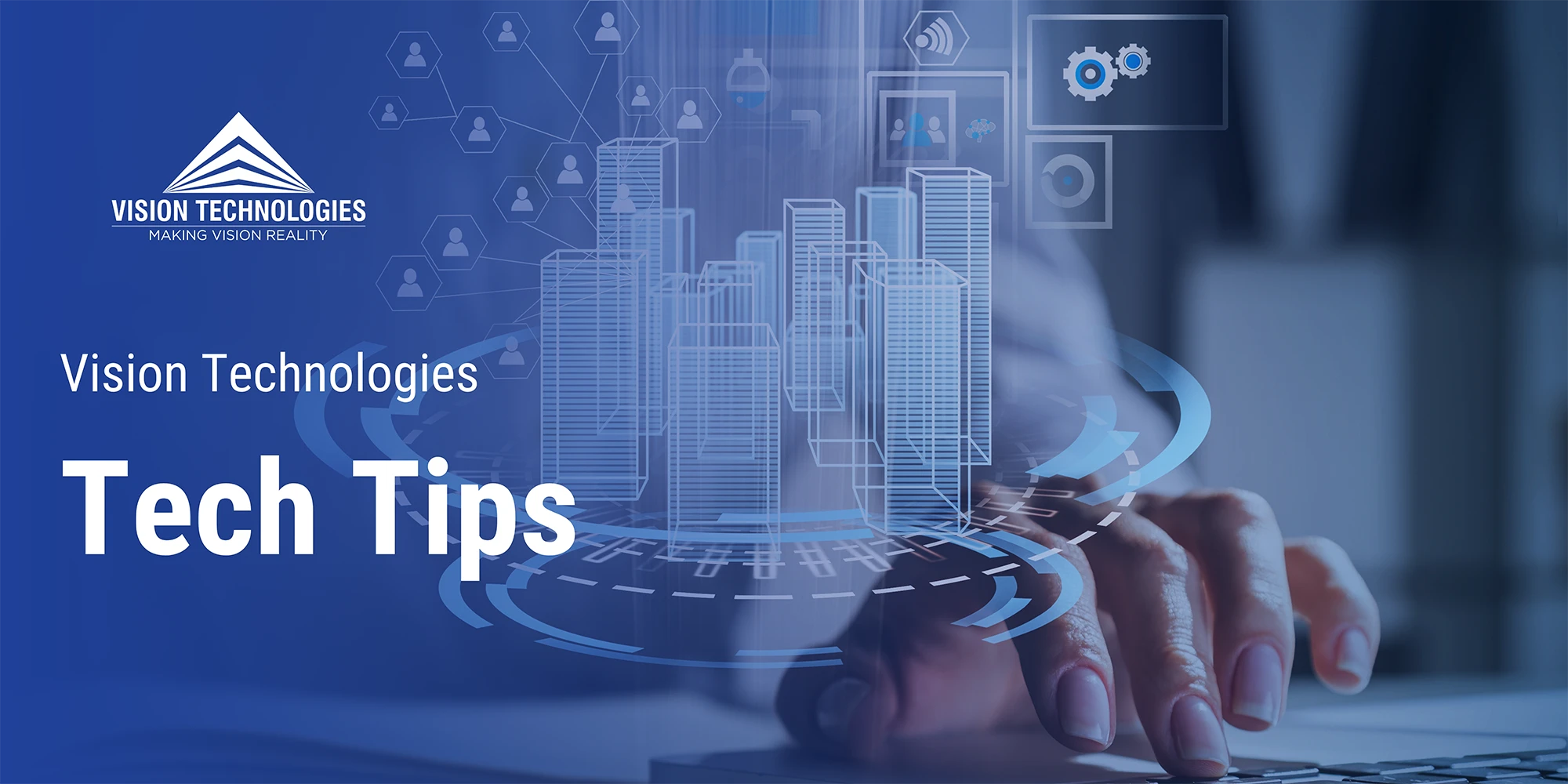
Blog
Commercial
Beyond Cameras & Monitoring: The Power of AI-Driven Security Insights
Is your company struggling to justify the investment in crucial electronic security systems? Too often, essential security upgrades are delayed until after a costly incident occurs. But what if your security infrastructure could do more than just protect against loss? What if it could actively contribute to your business’s efficiency and bottom line, creating a […]…
Jul 16, 2025

Data Sheet
Vision Service & Maintenance Agreement 2025
At Vision Technologies, Field Service is about keeping your technology performing at its best, every day, without exception. Our team delivers reliable, responsive, and expert support across the technologies that power your business. In a world where downtime costs more than money, Vision Technologies Field Service is your assurance that critical systems stay online, secure, […]…
Jul 9, 2025
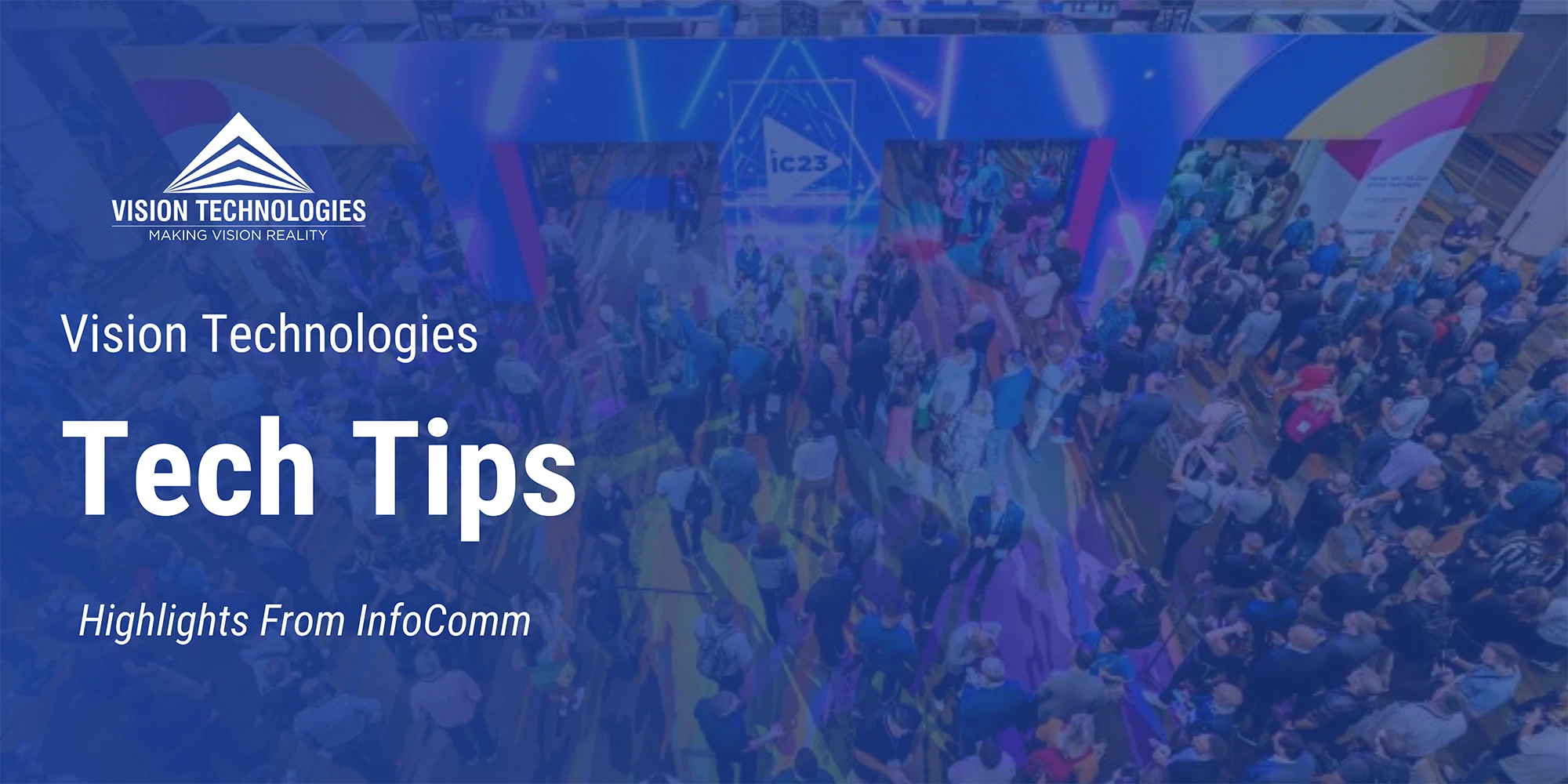
Blog
Commercial
InfoComm 2025 Recap: Key Insights on the Future of AV
Vision Technologies sent a passionate, forward-thinking team to InfoComm 2025, energized by the opportunity to explore the cutting edge of Pro AV technology and bring fresh insights back to our organization. Our team arrived ready to learn, connect, and engage with industry leaders, innovators, and solution providers from around the globe. The show floor provided […]…
Jul 2, 2025

Higher Education
Why Use AV Technology in Learning Environments?
How the elements of content, collaboration, and control impact students When considering how the implementation of new teaching methods will impact the ways AV technology is used in classrooms or other learning environments, it’s helpful to focus on why the technology needs to be used to communicate the material in the first place. First, knowing the why helps to […]…
Jun 6, 2025
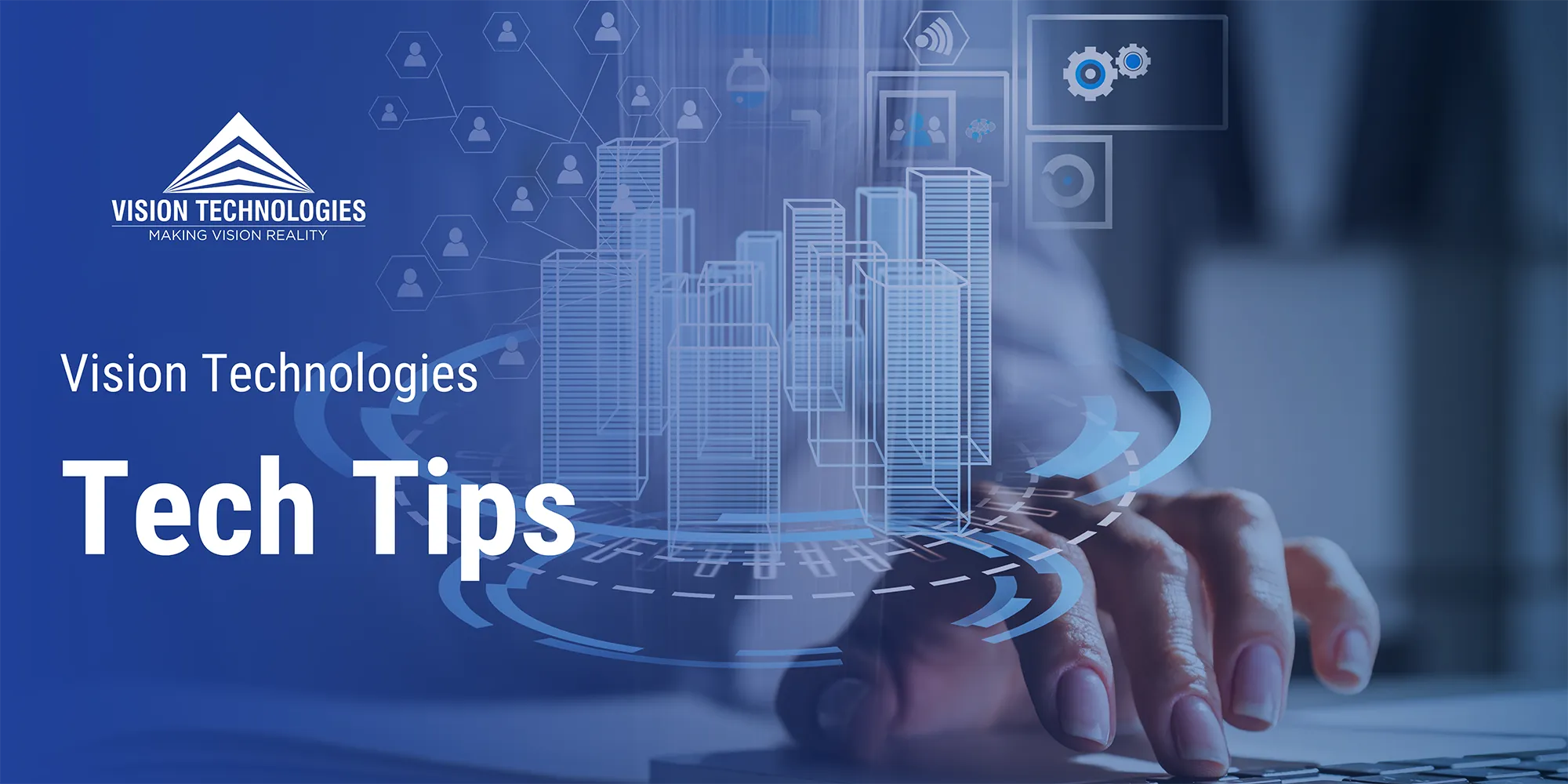
Blog
Commercial
Beyond Analog: Why Modernizing Your Surveillance is Critical for Security
You’ve heard it for years, maybe even decades: “Everything is going digital!” We’ve talked endlessly about technology converging onto networks. Yet, when you look around your own facilities – at your security cameras, your operational sensors, maybe even your access points – does it feel fully digital? Or are you still wrestling with outdated technology that just […]…
May 12, 2025

Blog
Commercial
Tech Tip: Why Now is the Time to Consider Direct View LED (DvLED) for Conference Rooms
The display technology in your meeting spaces might be holding you back if you are still struggling with fuzzy images and lighting. If you still rely on traditional projectors or LCD video walls in your conference rooms, it might be time to rethink your display strategy. Direct View LED (DvLED) technology has made significant strides […]…
Apr 23, 2025

Webinar
Government
Enhancing the Student Experience with AI-Powered Solutions
Higher education institutions are constantly striving to create a safer and more engaging environment for their students. Utilizing real world examples, this produced talk, in partnership with Genetec, explores how innovative technologies can transform the student experience, from enhancing campus safety and access control to fostering seamless collaboration and remote learning. Key Takeaways: We’ll delve into […]…
Apr 10, 2025

Blog
Commercial
How a Network Management System (NMS) Transforms Your IT Story
From Network Nightmares to IT Triumph In today’s hyper-connected world, the relentless surge of data and the complexity of managing sprawling networks can feel like facing a mythical beast. Network administrators are the heroes, battling against downtime, security threats, and the constant pressure to optimize performance. But without the right tools, this battle can feel […]…
Mar 13, 2025
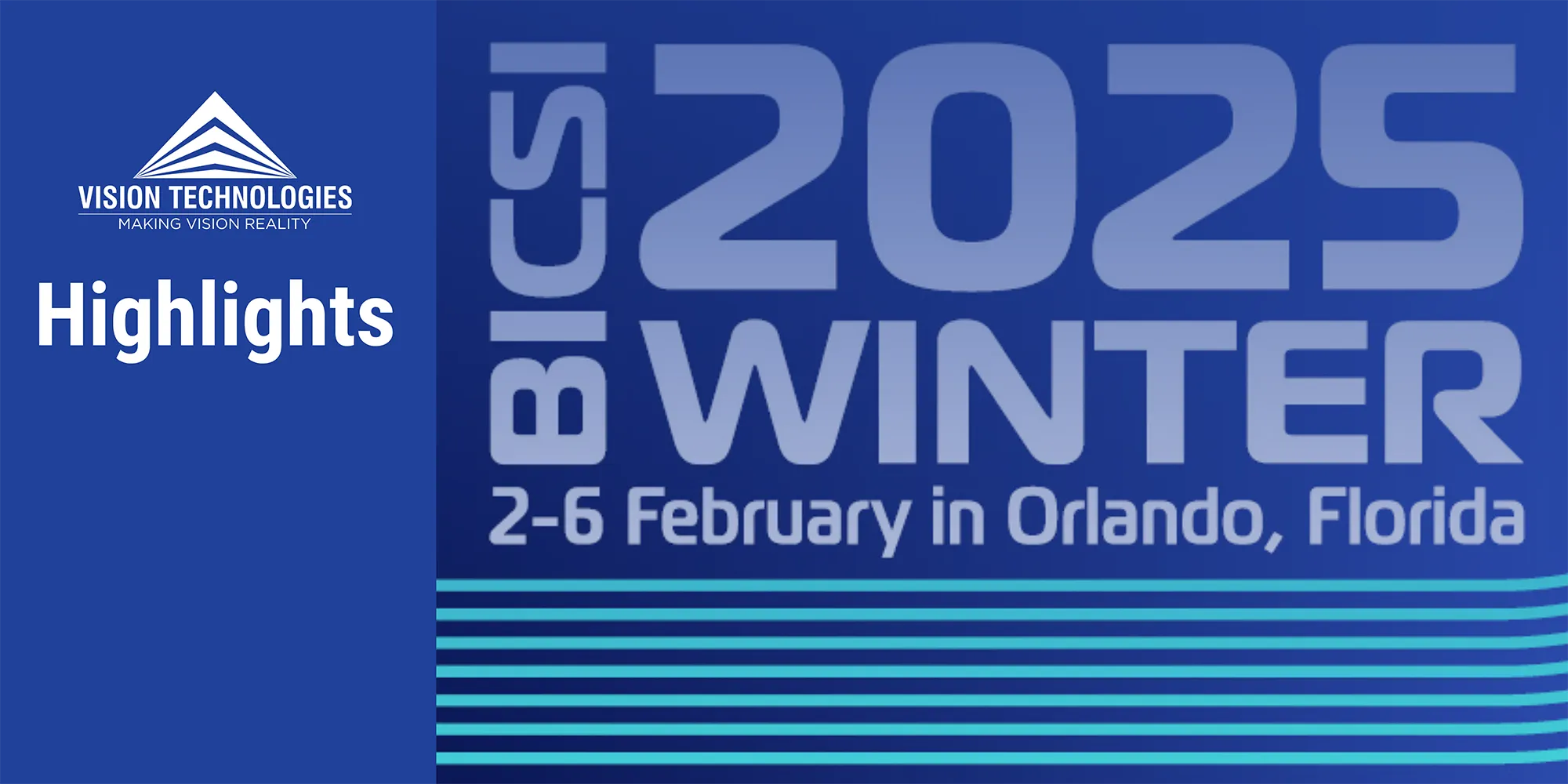
Blog
Government
Highlights from the 2025 BICSI Winter Conference: A Look at What’s Next in Telecom
The Vision Technologies team had a strong presence at the recent 2025 BICSI Winter Conference. Held at the beautiful Gaylord Palms Resort and Convention Center from February 3rd-6th, this conference offered a glimpse into the future of telecommunications. Scott Wells, Wireless Solutions Architect at Vision Technologies, is a long-time BICSI member and Chairman of the […]…
Feb 18, 2025

Video
Government
Sound Masking for Government Facilities
Protect Sensitive Information with Sound Masking Systems In today’s world, it is more important than ever to protect sensitive information. This is especially true for government and military facilities, which often handle classified data. One way to enhance security is to install a sound masking system. Sound masking systems use a network of speakers to […]…
Sep 5, 2024

Data Sheet
Healthcare
In-Building Wireless Solutions For Hospitals
Vision Technologies has extensive past performance providing complete neutral-host, in-building wireless coverage by enabling seamless access to all wireless data and voice services within healthcare facilities. Our solutions feature the industry’s leading converged wireless enterprise networks, providing high-quality and reliable coverage for wireless data (Wireless LAN), voice (PCS, LTE, cellular) converged voice and data (VoIP, […]…
Jun 20, 2024

Podcast
Commercial
Insights from Vision Technologies’ Rick Stuart on ‘Keepin’ The Lights On’ Podcast
Decoding IT Project Success: Tired of IT projects turning into budget-busting black swans? You’re not alone. A Harvard Business Review study reveals that a staggering one in six IT projects suffers massive cost overruns. That’s why Vision Technologies’ Rick Stuart, Vice President, Security Solutions – Technology Center of Excellence, joined the “Keepin’ The Lights On” […]…
May 1, 2024

Video
Data Centers
Trending Topics in Data Centers
Vision Technologies has been monitoring recent trends in the data center space. There’s been exponential growth, largely due to machine learning and AI facilities being built at hyperscale level, enterprise level, and multi tenant data centers. Learn about the factors of this growth with Jon Lyman, Vice President of Critical Infrastructures and Data Centers at […]…
Apr 4, 2024

Data Sheet
Data Centers
Trust Your Data Center’s Infrastructure
Vision Technologies believes your Data Center projects should have an ‘easy button’ to scale with AI AI is rapidly evolving the data center landscape. Complex AI demands strain your data center’s cabling, security, and deployment speed. Your business now relies on denser, more complex infrastructure needs. You need a Data Center infrastructure partner who has […]…
Feb 27, 2024

Data Sheet
Commercial
In-Building Wireless Solutions
Vision Technologies provides complete neutral-host, in-building wireless coverage by enabling seamless access to all wireless data and voice services within corporate offices, universities, hospitals, airports, manufacturing, and government facilities. Our solutions feature the industry’s leading converged wireless enterprise networks, providing high-quality and reliable coverage for wireless data (Wireless LAN), voice (PCS, LTE, cellular) converged voice […]…
Jan 27, 2024

Video
Commercial
Vision Technologies and Graybar: Partnering for IT Solutions Success
Success comes from partnering with companies that share similar cultures. Added value based solutions that help our customers achieve their goals is a common principle that Graybar and Vision Technologies share. Check out this video case study highlighting the relationship between Vision Technologies and our partner Graybar. You’ll get a glimpse into how Vision Technologies’ integration solutions pair […]…
Nov 29, 2023

White Paper
Higher Education
The Keys to Hybrid Learning
Hybrid learning is here to stay. The right remote learning technology seamlessly links educators and students anywhere in the world. Download this complete guide to help you choose the right……
Nov 16, 2023

Blog
Higher Education
AV Trends in Higher Education
For the past three years in higher education the focus has been on hybrid learning, and it’s not over. The pandemic showed institutions how effective and flexible hybrid or remote learning can be. Whether institutions were rushing, or took a more deliberate approach to hybrid learning, they are now stepping back to see what worked, […]…
Nov 15, 2023
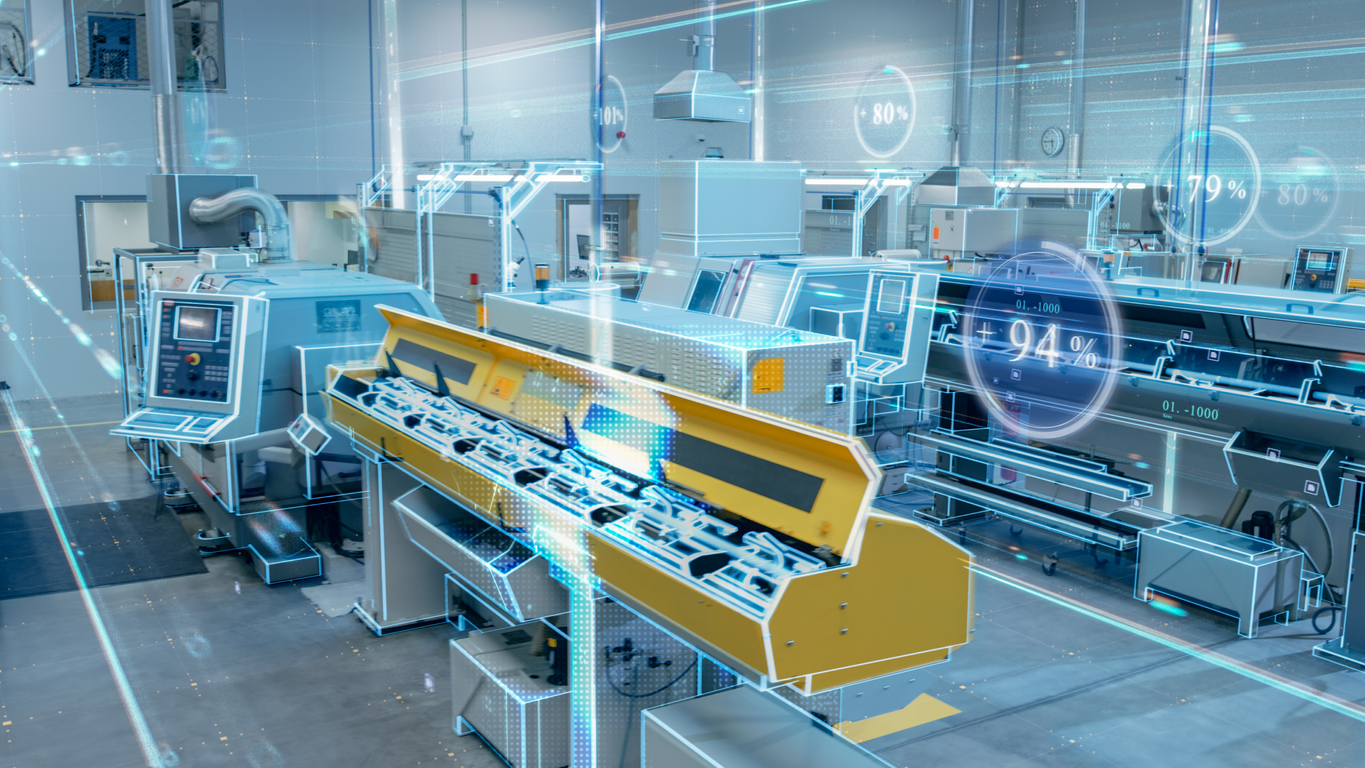
Blog
Commercial
How to Accelerate Factory Digitalization with Private 4G/5G
In today’s competitive manufacturing environment, businesses need to find ways to improve efficiency, productivity, and safety. One way to do this is to deploy a private 4G/5G network. A private 4G/5G network is a dedicated wireless network that is designed for a specific organization. This type of network offers a number of benefits for manufacturers, […]…
Aug 8, 2023

Looking for a partner you can trust?
Contact us today to start a conversation about your technology goals.